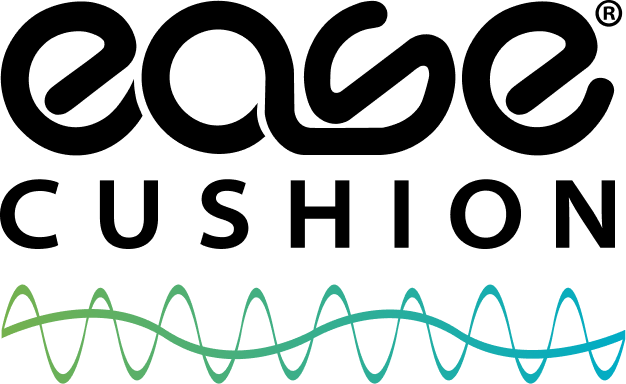Understanding Lower Back Pain
Lower back pain is a widespread condition that can significantly impact your daily life. Often resulting from a strain or injury to muscles or tendons, lower back pain can also stem from arthritis, structural issues, or disk injuries. Fortunately, most cases improve with rest, physical therapy, and medication. Maintaining a healthy weight and staying active can help reduce the risk of developing lower back pain.
Contents
- Overview
- Symptoms and Causes
- Diagnosis and Tests
- Management and Treatment
- Prevention
- Outlook / Prognosis
- Living With
Overview
What is Lower Back Pain?
Lower back pain can arise from various injuries, conditions, or diseases, most commonly from a strain to muscles or tendons in the back. The pain can range from mild to severe and may make walking, sleeping, working, or performing everyday activities challenging.
Typically, lower back pain improves with rest, pain relievers, and physical therapy. Cortisone injections and manual treatments, such as osteopathic or chiropractic manipulation, can also alleviate pain and aid the healing process. In some cases, surgery may be necessary.
How Common is Lower Back Pain?
Approximately four out of five people will experience lower back pain at some point in their lives. It is one of the most frequent reasons for visiting healthcare providers.
Certain factors increase the likelihood of experiencing lower back pain:
- Age: People over 30 are more prone to back pain due to the natural wear and tear of disks.
- Weight: Overweight individuals put more pressure on their joints and disks, increasing the risk of pain.
- Overall Health: Weak abdominal muscles, smoking, excessive alcohol consumption, and a sedentary lifestyle can contribute to back pain.
- Occupation and Lifestyle: Jobs and activities involving heavy lifting or bending heighten the risk.
- Structural Problems: Conditions like scoliosis that affect spine alignment can cause severe pain.
- Disease: Family history of osteoarthritis, cancer, or other diseases can increase the risk.
- Mental Health: Depression and anxiety can also lead to back pain.
Symptoms and Causes
Symptoms of Lower Back Pain
Symptoms can appear suddenly or gradually and might follow specific events, like bending over. Pain can be sharp or dull, possibly radiating to the buttocks or down the legs (sciatica). Often, the pain worsens in certain positions and improves when lying down.
Other symptoms include:
- Stiffness: Difficulty moving or straightening the back.
- Posture Problems: Challenges standing up straight, appearing crooked or bent.
- Muscle Spasms: Involuntary muscle contractions causing severe pain.
Causes of Lower Back Pain
Various injuries, conditions, and diseases can lead to lower back pain, including:
- Strains and Sprains: Lifting heavy objects or improper lifting techniques can injure muscles, tendons, or ligaments.
- Fractures: Spinal fractures from accidents or conditions like osteoporosis.
- Disk Problems: Bulging or herniated disks pressing on nerves.
- Structural Problems: Spinal stenosis or scoliosis causing pain and stiffness.
- Arthritis: Osteoarthritis and ankylosing spondylitis affecting the spine.
- Disease: Tumors, infections, and certain cancers.
- Spondylolisthesis: Vertebrae slipping out of place.
Diagnosis and Tests
How is Lower Back Pain Diagnosed?
Healthcare providers will inquire about your symptoms and conduct a physical exam. Imaging studies, such as X-rays, MRIs, and CT scans, may be ordered to view bones and soft tissues. Electromyography (EMG) tests can assess nerve and muscle function.
Management and Treatment
Treatments for Lower Back Pain
Most lower back pain improves with rest, ice, and over-the-counter pain relievers. Staying active can help expedite healing. Other treatments include:
- Medications: NSAIDs or prescription drugs for pain relief. Muscle relaxants may prevent spasms.
- Physical Therapy (PT): Strengthens muscles to support the spine and improve flexibility.
- Hands-on Manipulation: Osteopathic manipulation, chiropractic adjustments, or massage therapy.
- Injections: Steroid injections to reduce inflammation and relieve pain.
- Surgery: Necessary for certain injuries or conditions, with various minimally invasive techniques available.
Prevention
Can Lower Back Pain be Prevented?
While you cannot prevent pain from diseases or structural issues, you can avoid injuries. Tips include:
- Maintain a Healthy Weight: Reduces pressure on vertebrae and disks.
- Strengthen Abdominal Muscles: Exercises like Pilates support the spine.
- Lift Properly: Use your legs, not your back, and avoid twisting while lifting.
Outlook / Prognosis
What is the Outlook for Lower Back Pain?
The outlook varies depending on the cause. Most people recover from strains and sprains without long-term issues but may experience recurring episodes. Chronic pain might persist for those with degenerative conditions. However, treatments can help many live pain-free.
Living With
When to See a Healthcare Provider
Consult your provider if:
- Pain persists after a week of home care.
- You experience tingling, numbness, or weakness in your legs.
- Severe pain or muscle spasms interfere with daily activities.
- You have unexplained symptoms like fever or weight loss.
Say Goodbye to Lower Back Pain with the Ease Cushion
Lower back pain can be debilitating, especially for those who spend extended periods in a wheelchair. The Ease Cushion offers a revolutionary solution with its patented HAPT technology, designed to automatically adjust and redistribute pressure throughout the day. By simulating natural lifts and shifts, the cushion enhances blood flow, reducing pressure on sensitive areas and preventing pressure sores. Unlike static cushions, the Ease Cushion adapts to your movements, providing continuous support and comfort. Experience relief and regain your independence with the Ease Cushion, your partner in pain-free living.
Discover more about how the Ease Cushion can transform your comfort and health!
















Dejar un comentario
Todos los comentarios se revisan antes de su publicación.
Este sitio está protegido por hCaptcha y se aplican la Política de privacidad de hCaptcha y los Términos del servicio.